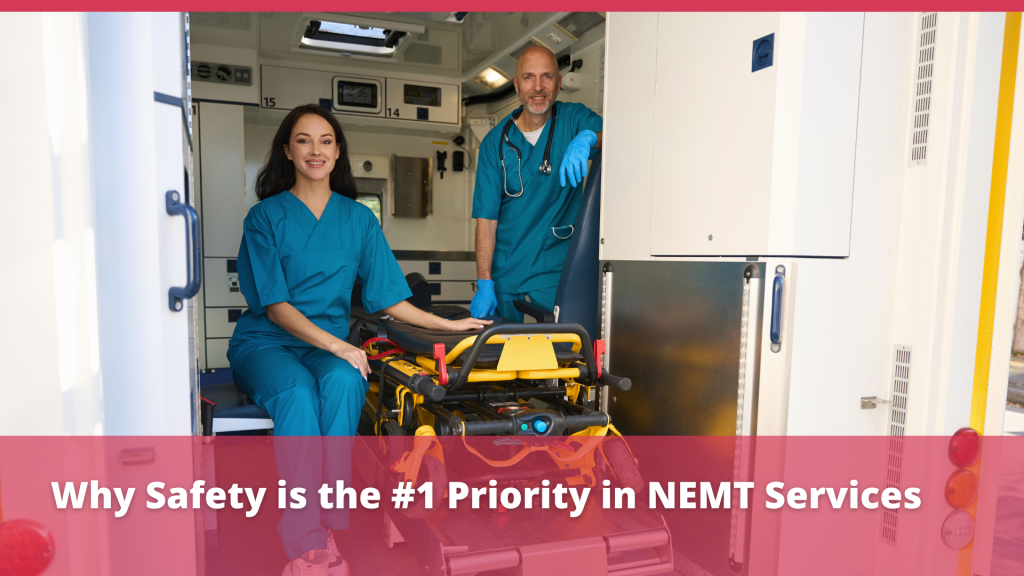New at Safr Care
Why Safety is the #1 Priority in NEMT Services

Why Safety is the #1 Priority in NEMT Services
Non-Emergency Medical Transportation (NEMT) services cater to individuals who require assistance getting to and from medical appointments, often with pre-existing health conditions or mobility limitations. In this context, safety is not just a consideration; it’s the paramount priority. This article explores the critical reasons why safety must be the number one focus in NEMT services.
The Vulnerability of NEMT Passengers
NEMT passengers often have unique needs and vulnerabilities that necessitate a heightened focus on safety.
- Mobility Limitations: Many passengers rely on wheelchairs, walkers, or other assistive devices.
- Medical Conditions: Passengers may have chronic illnesses, disabilities, or require specialized medical equipment.
- Cognitive Impairments: Some passengers may have cognitive challenges that affect their ability to navigate or communicate.
Preventing Accidents and Injuries
Safety protocols are essential to prevent accidents and injuries during transit, ensuring the well-being of passengers.
Proper Securement and Restraints
Ensuring wheelchairs and other mobility devices are securely fastened and that passengers are properly restrained.
Safe Vehicle Operation
Drivers must adhere to safe driving practices, especially when transporting vulnerable passengers.
Accessibility and Ease of Entry/Exit
Vehicles must be equipped with ramps or lifts and designed for easy entry and exit.
- Emergency Preparedness: Drivers must be trained to handle medical emergencies and provide first aid.
- Vehicle Maintenance: Regular maintenance and inspections to ensure vehicles are in optimal condition.
- Weather Considerations: Adapting driving practices and schedules to accommodate adverse weather conditions.
Building Trust and Confidence
A strong safety record builds trust and confidence among passengers, their families, and healthcare providers.
- Reliability: Demonstrating a commitment to safety enhances the reliability of the service.
- Peace of Mind: Passengers and their families feel reassured knowing they are in safe hands.
- Reputation: Safety is a crucial factor in building a positive reputation.
Compliance with Regulations
NEMT providers must adhere to various safety regulations and standards to ensure compliance and avoid legal issues.
- Federal and State Regulations: Complying with transportation and safety regulations.
- Insurance Requirements: Maintaining adequate insurance coverage to protect passengers and the company.
- Licensing and Certification: Ensuring drivers and vehicles are properly licensed and certified.
Enhancing Patient Experience
A focus on safety contributes to a positive patient experience, improving overall satisfaction and well-being.
- Comfort and Dignity: Providing a safe and comfortable environment enhances the patient’s experience.
- Reduced Anxiety: Passengers feel less anxious when they know safety is a priority.
- Positive Interactions: Trained and compassionate drivers contribute to a positive experience.
Conclusion: Safety is the cornerstone of NEMT services. By prioritizing safety, NEMT providers can ensure the well-being of their passengers, build trust, comply with regulations, and enhance the overall patient experience. It’s not just a best practice; it’s a fundamental responsibility.
